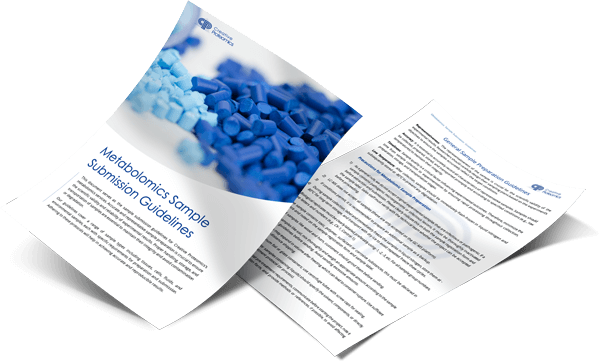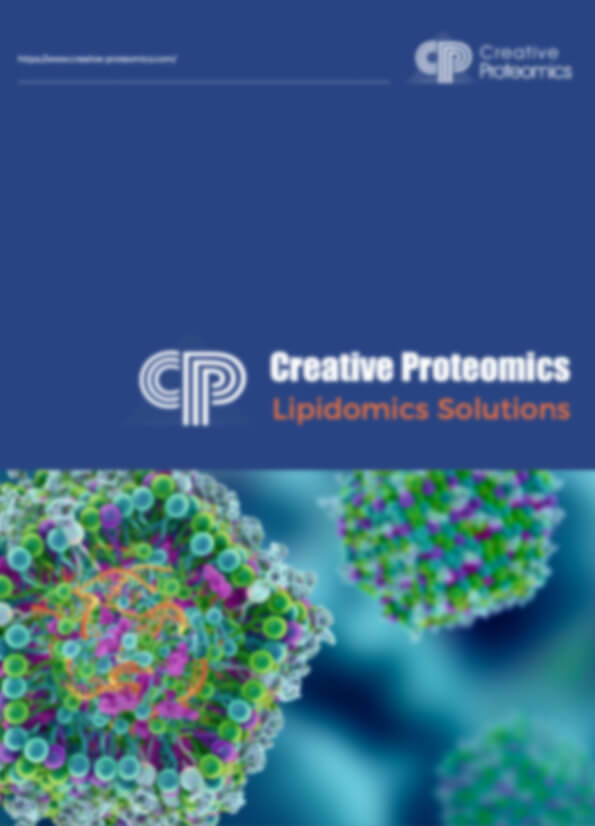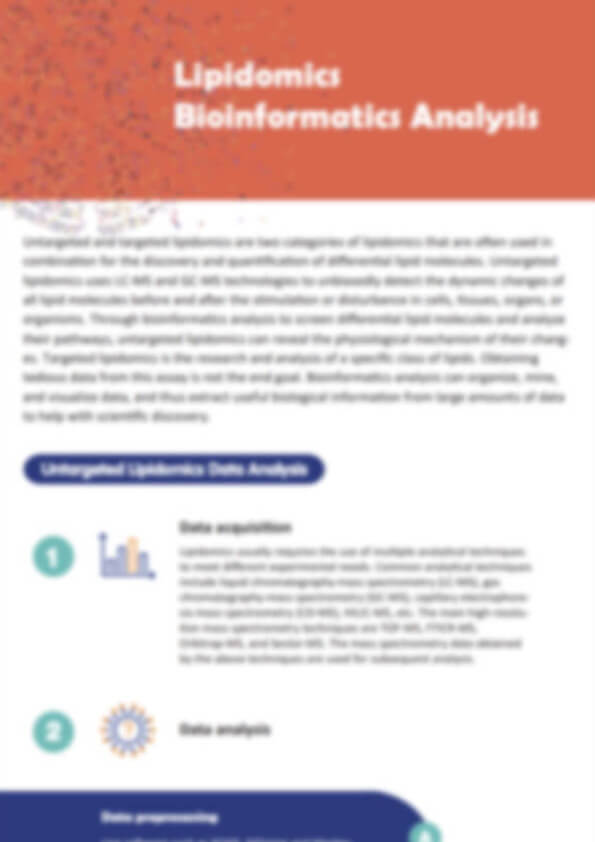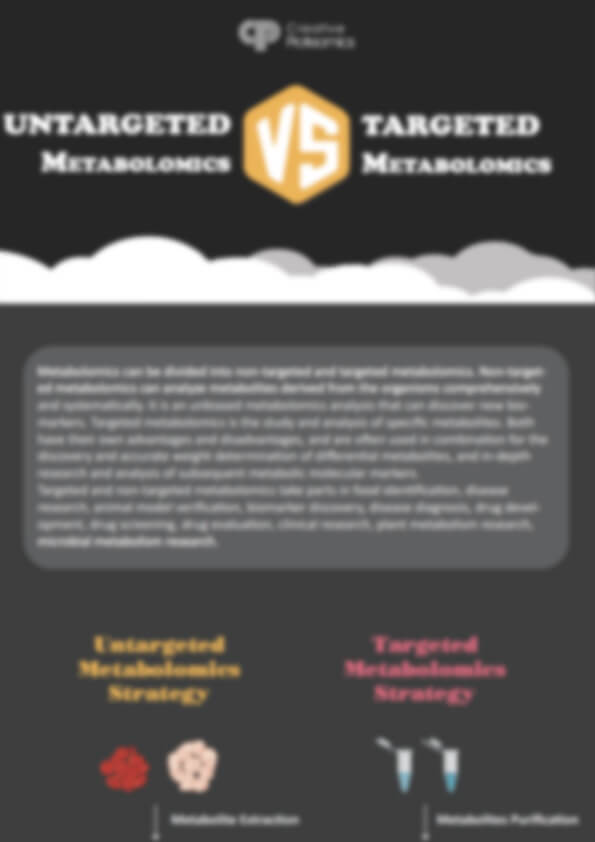Endocannabinoids Analysis Service
Unlock the complexity of the endocannabinoid system with advanced LC-MS/MS solutions—comprehensive, sensitive, and scientifically validated.
Why Choose Creative Proteomics?
- Ultra-Sensitive Quantification: Detect AEA & 2-AG at 10 pg/mL.
- Comprehensive Coverage: Profile >50 endocannabinoid-related lipids.
- Advanced Platforms: Orbitrap HRMS & Triple Quad™ for accurate results.
- End-to-End Solutions: From extraction to bioinformatics analysis.
Submit Your Request Now
×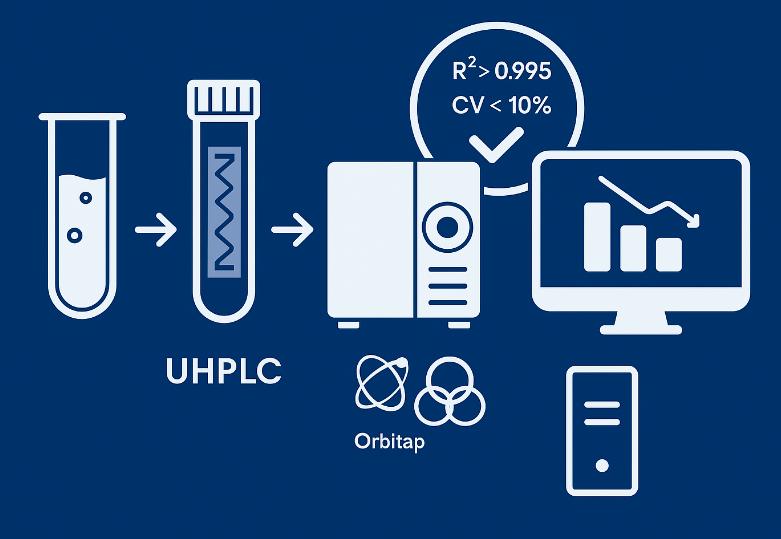
What You Receive:
- Raw and processed LC-MS/MS data
- Absolute quantitation tables (LOD, LOQ, CV)
- Multi-point calibration curves
- Statistical analysis outputs (PCA, heatmaps)
- What We Provide
- Advantages
- Technology Platform
- Sample Requirement
- Demo
- FAQ
What Are Endocannabinoids?
Endocannabinoids (eCBs) are lipid-based signaling molecules derived from arachidonic acid and related polyunsaturated fatty acids. They act as endogenous ligands for cannabinoid receptors (CB1 and CB2) and regulate a broad spectrum of physiological processes, including energy homeostasis, stress response, and synaptic signaling. The two primary endocannabinoids—anandamide (AEA) and 2-arachidonoylglycerol (2-AG)—are complemented by a complex network of congeners such as N-acyl ethanolamines (NAEs) and monoacylglycerols (MAGs). These molecules exert their effects via G-protein coupled receptors and transient receptor potential (TRP) channels, forming a critical component of the endocannabinoid system (ECS).
Due to their lipophilic nature and low abundance in biological matrices, accurate endocannabinoid profiling requires advanced analytical platforms and stringent sample handling protocols to prevent degradation or artificial generation during extraction.
Why Analyze Endocannabinoids?
Understanding the endocannabinoid system offers actionable insights into physiological and metabolic processes relevant to neuroscience, immunology, and nutritional sciences. Quantifying eCBs and related lipid mediators helps researchers:
- Elucidate Molecular Pathways: Characterize ECS involvement in energy regulation, neuroprotection, and stress signaling.
- Correlate Lipid Signaling with Phenotype: Explore associations between endocannabinoid fluctuations and experimental conditions in preclinical or research settings.
- Support Mechanistic Studies: Evaluate enzyme activities (FAAH, MAGL) and receptor ligand availability through precise lipid quantification.
Creative Proteomics provides end-to-end analytical solutions for comprehensive endocannabinoid profiling, ensuring accuracy, reproducibility, and compliance with research-driven objectives.
Creative Proteomics's Endocannabinoids Analysis Solutions
Targeted Endocannabinoid Quantification
Ultra-sensitive detection of core molecules including anandamide (AEA) and 2-arachidonoylglycerol (2-AG). Measurement of additional N-acyl ethanolamines and monoacylglycerols.
Comprehensive Endocannabinoid Panel
Analysis of >50 structurally related molecules, including eCB-like lipids such as N-arachidonoyldopamine (NADA) and N-acyl taurines. Profiling across multiple biological matrices: plasma, serum, CSF, tissues, and cell cultures.
Isotope Dilution-Based Quantitation
Incorporation of deuterated internal standards for absolute quantification and minimized matrix effect bias.Multi-point calibration for precise concentration determination.
Lipid Mediator Network Analysis
Parallel assessment of eCB congeners to evaluate biosynthetic and degradative pathways (FAAH, MAGL activity indicators). Data integration with metabolic and signaling pathways.
Custom Bioinformatics & Statistical Analysis
PCA, PLS-DA, and pathway enrichment to interpret eCB changes. Generation of publication-ready figures and comprehensive statistical outputs.
Method Development & Validation
Tailored method optimization for specific sample types or experimental objectives. Validation parameters include LOD, LOQ, linearity, recovery, and stability.
What Endocannabinoids Can We Detect?
| Category | Detected Compounds |
|---|---|
| Classical Endocannabinoids | Anandamide (AEA), 2-Arachidonoylglycerol (2-AG), 1-Arachidonoylglycerol (1-AG), Virodhamine (O-AEA), N-Arachidonoyl dopamine (NADA) |
| N-Acylethanolamines (NAEs) | N-Palmitoylethanolamine (PEA), N-Oleoylethanolamine (OEA), N-Stearoylethanolamine (SEA), N-Linoleoylethanolamine (LEA), N-Docosahexaenoylethanolamine (DHEA), N-Eicosapentaenoylethanolamine (EPEA), N-Arachidonoylethanolamine (AEA, part of classical) |
| Monoacylglycerols (MAGs) | 2-Linoleoylglycerol (2-LG), 2-Palmitoylglycerol (2-PG), 2-Oleoylglycerol (2-OG), 2-Docosahexaenoylglycerol (2-DHG), 2-Eicosapentaenoylglycerol (2-EPG) |
| Fatty Acid Amides | Oleamide, Stearamide, Palmitamide, Linoleamide, Arachidonamide |
| Precursors & Pathway Intermediates | Arachidonic acid (AA), Linoleic acid, Oleic acid, Stearic acid, Palmitic acid, Glycerol, Ethanolamine, N-Acylphosphatidylethanolamines (NAPEs), Lysophospholipids (Lyso-PE, Lyso-PC) |
| Oxidative/Enzymatic Derivatives | Prostaglandin ethanolamides (PG-EAs), Prostaglandin glycerol esters (PG-Gs), Hydroxy-eicosatetraenoic acids (HETEs), Epoxyeicosatrienoic acids (EETs) |
| Other Related Lipid Mediators | Docosahexaenoyl derivatives (e.g., DHEA), Eicosapentaenoyl derivatives (EPEA), Resolvin precursors (optional upon request) |
| Optional: Enzyme Targets | FAAH (Fatty acid amide hydrolase), MAGL (Monoacylglycerol lipase), NAPE-PLD (N-acyl phosphatidylethanolamine phospholipase D), DAGL (Diacylglycerol lipase) |
Total Coverage: >50 structurally characterized molecules, expandable upon request for specific signaling lipid targets.
Advantages of Our Endocannabinoids Analysis Services
- Ultra-High Sensitivity: Detect endocannabinoids down to 10 pg/mL in plasma and CSF using isotope dilution LC-MS/MS.
- Wide Dynamic Range: Quantification across 4–5 orders of magnitude, ensuring accurate results from trace to high concentrations.
- Excellent Reproducibility: Intra- and inter-assay CV<10%, supported by strict QC with deuterated internal standards.
- High Recovery and Stability: Optimized solid-phase extraction (SPE) guarantees recovery rates >85% for major eCBs without isomerization.
- Accurate Quantification: Multi-point calibration curves with R² > 0.995, validated across diverse biological matrices.
- Comprehensive Coverage: Analysis of >50 endocannabinoid-related molecules, including AEA, 2-AG, NAEs, MAGs, and eCB-like compounds.
- Fast, High-Resolution Detection: Utilization of Orbitrap HRMS (resolution: 70,000 FWHM) and triple quadrupole systems for targeted MRM transitions.
Workflow for Endocannabinoids Analysis Service
1. Sample Collection & Quality Control
Matrices Accepted: plasma, serum, CSF, brain tissue, cultured cells.
QC Measures: visual inspection, pH assessment, immediate stabilization under inert conditions to prevent oxidation or enzymatic degradation.
2. Lipid Extraction & Cleanup
Solid-phase extraction (SPE) for selective enrichment of endocannabinoids Protein precipitation and phase separation to eliminate interfering substances. Recovery efficiency verified using isotope-labeled internal standards.
3. Chromatographic Separation
Performed via reverse-phase UHPLC. Optimized gradient elution for polyunsaturated lipids. Temperature-controlled separation with<2% coefficient of variation (CV).
4. Mass Spectrometry Analysis
- High-resolution and tandem mass spectrometry used for both qualitative and quantitative detection
- Positive/negative electrospray ionization (ESI) mode switching
- Detection sensitivity in the low pg/mL range for key analytes (e.g., AEA, 2-AG)
5. Data Processing & Quantification
Quantification via isotope dilution and multi-point calibration (R² > 0.995). Matrix-corrected absolute concentration calculations. Quality metrics include LOD, LOQ, recovery >85%, and precision CV<10%.
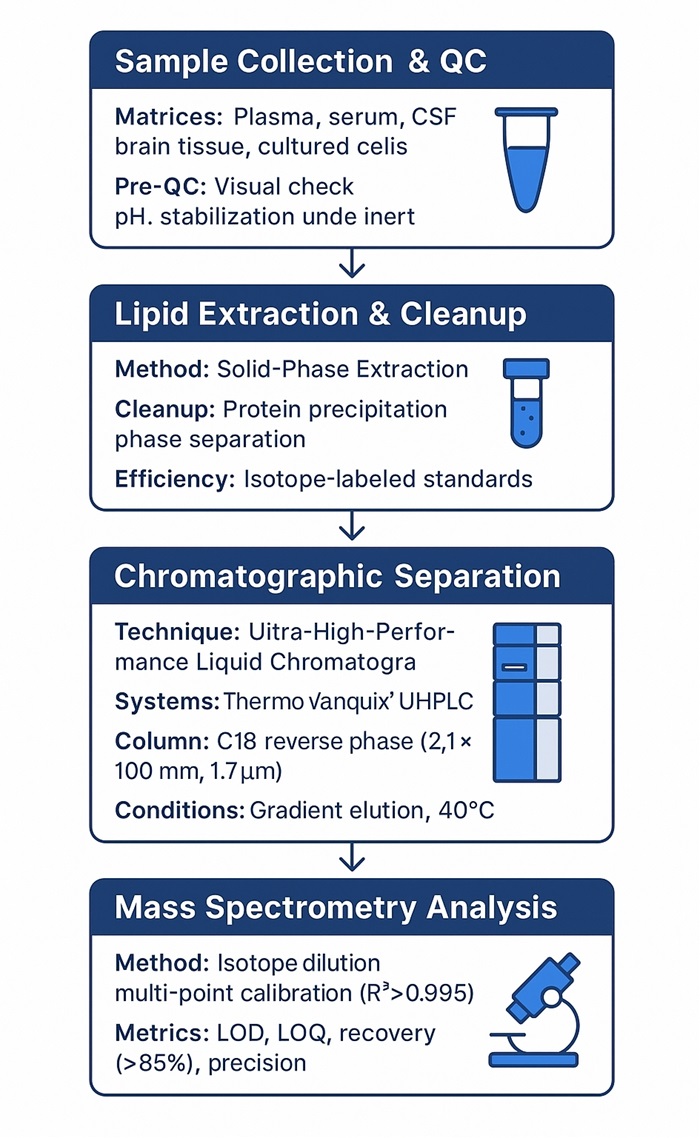
Technology Platform for Endocannabinoids Analysis Service
Chromatographic Separation
- Platform: Thermo Scientific Vanquish™ UHPLC
- Column: Acquity UPLC BEH C18, 2.1 × 100 mm, 1.7 μm
- Gradient: Reverse-phase gradient with aqueous phase (0.1% formic acid) and organic phase (acetonitrile/isopropanol mix)
- Temperature: Maintained at 40 °C for optimal lipid separation
- Injection Volume: Typically 5–10 μL
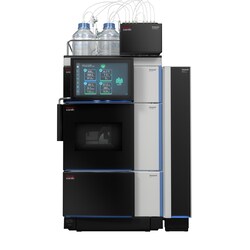 Vanquish™ UHPLC (Figure from Thermo Scientific)
Vanquish™ UHPLC (Figure from Thermo Scientific)
Mass Spectrometry Analysis
High-Resolution Accurate Mass (HRAM) Platform
- Instrument: Thermo Scientific Q Exactive™ Orbitrap
- Resolution: Up to 70,000 FWHM at m/z 200
- Scan Mode: Full MS + PRM (Parallel Reaction Monitoring)
- Ionization: Electrospray Ionization (ESI), polarity switching (+/−)
- Dynamic Range: >4 orders of magnitude
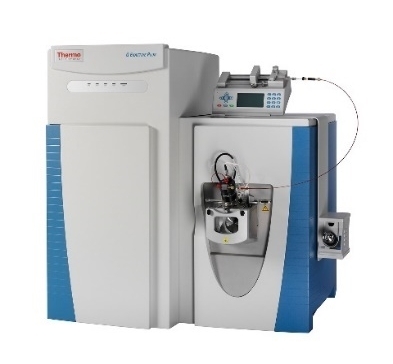 Q Exactive™ HF-X (Figure from Thermo Scientifi)
Q Exactive™ HF-X (Figure from Thermo Scientifi)
Targeted Quantitative Platform
- Instrument: SCIEX Triple Quad™ 6500+
- Mode: Multiple Reaction Monitoring (MRM) for targeted quantitation
- LOD: As low as 10 pg/mL for AEA and 2-AG
- Precision: CV consistently<10% across replicates
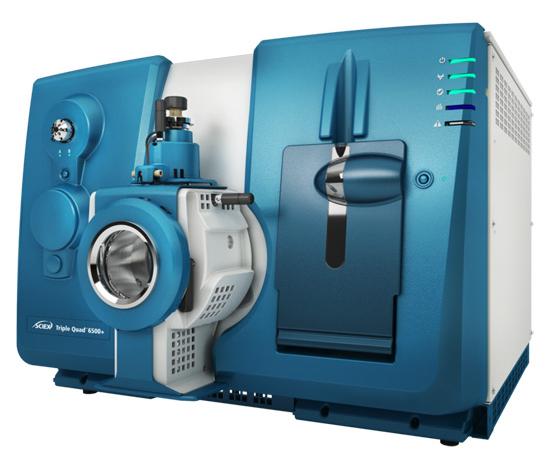 SCIEX Triple Quad™ 6500+ (Figure from Sciex)
SCIEX Triple Quad™ 6500+ (Figure from Sciex)
Sample Requirements for Endocannabinoids Analysis Service
| Sample Type | Recommended Volume / Weight | Container | Storage Conditions | Notes |
|---|---|---|---|---|
| Plasma / Serum | ≥ 200 µL | Cryovials (polypropylene) | −80 °C | Collect in EDTA tubes; avoid hemolysis |
| CSF | ≥ 150 µL | Cryovials | −80 °C | Handle under inert atmosphere if possible |
| Brain Tissue | ≥ 50 mg | Pre-weighed tubes | Snap-freeze in liquid nitrogen | Do not thaw before extraction |
| Cell Pellets | ≥ 2 × 10⁶ cells | Cryovials | −80 °C | Wash with PBS, remove culture medium |
| Conditioned Media | ≥ 500 µL | Sterile tubes | −80 °C | Pre-clear by centrifugation |
Notes:
- Avoid repeated freeze–thaw cycles to prevent degradation.
- Maintain samples under inert gas (e.g., N₂ or Ar) for long-term storage.
- Ship samples on dry ice with appropriate labeling.
Demo Results

Representative demo results for endocannabinoid analysis. (A) Total ion chromatogram (TIC) and extracted ion chromatograms for AEA and 2-AG. (B) Calibration curve showing excellent linearity (R² = 0.996). (C) QC table summarizing LOD, LOQ, and CV for key analytes. (D) Heatmap of normalized endocannabinoid profiles across samples.
FAQ of Endocannabinoids Analysis Service
What are the main challenges in endocannabinoid quantification?
Endocannabinoids are highly lipophilic and present at very low concentrations in biological samples, requiring optimized extraction techniques and isotope-labeled standards to minimize matrix effects.
How do you prevent degradation of endocannabinoids during sample handling?
Samples are processed under inert gas conditions (N₂ or Ar), stored at −80 °C, and extracted with protocols validated for oxidative stability.
Can the analysis distinguish between isomeric compounds such as 1-AG and 2-AG?
Yes, our UHPLC separation and optimized gradient methods ensure baseline resolution between isomers prior to MS detection.
How is accuracy ensured across different biological matrices?
Matrix-specific calibration and deuterated internal standards are used, supported by multi-level QC and spike-recovery assessments.
What quality metrics are included in your reports?
We provide LOD, LOQ, linearity (R² > 0.995), recovery percentage, and precision (CV%) for all targeted analytes.
Can your workflow handle oxidized derivatives and eCB-like molecules?
Yes, the method can be extended to include prostamides, epoxides, and related signaling lipids upon request.
What bioinformatics outputs can be provided for large datasets?
We offer PCA, PLS-DA, pathway enrichment, and correlation heatmaps for comprehensive interpretation of lipidomics profiles.
Learn about other Q&A about proteomics technology.
Publications
Here are some of the lipidomics-related papers published by our clients:

- White matter lipid alterations during aging in the rhesus monkey brain. 2024.
- Characterization of Dnajc12 knockout mice, a model of hypodopaminergia. 2024.
- Annexin A2 modulates phospholipid membrane composition upstream of Arp2 to control angiogenic sprout initiation. 2023.
- Lipid Membrane Engineering for Biotechnology (Doctoral dissertation, Aston University). 2023.
- Summative and ultimate analysis of live leaves from southern US forest plants for use in fire modeling. 2020.
